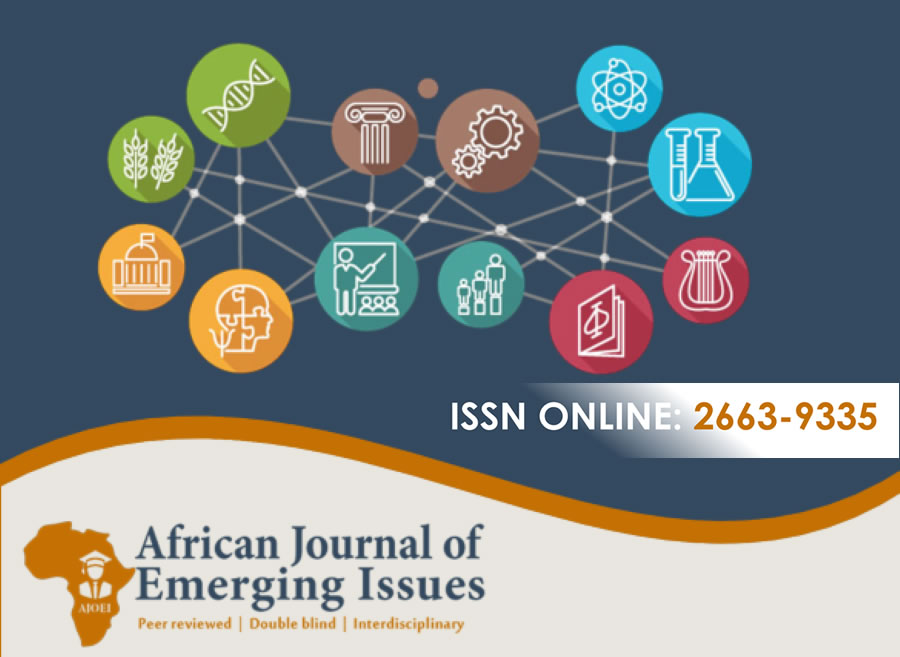EFFECT OF PERFORMANCE EVALUATION ON EMPLOYEE PRODUCTIVITY: LITERATURE BASED
Abstract
Purpose of the study: Performance evaluation is a review of an employee's job performance and assigned responsibilities. It typically involves a supervisor looking at an employee's abilities and accomplishments over a set period of time. Performance evaluation facilitate productive work among workers and productivity is essential for guaranteeing that enterprises advance to the next level. The study did a literature review to examine the effect of performance evaluation on employee productivity.
Findings: Performance evaluation plays a crucial role in influencing employee productivity. Firstly, it provides a platform for setting clear goals and expectations. When employees have a well-defined understanding of what is expected of them, they can align their efforts accordingly, resulting in increased productivity. Moreover, performance evaluations facilitate regular feedback and communication between employees and their supervisors. Constructive feedback helps employees identify their strengths and weaknesses, enabling them to make necessary improvements and optimize their performance. Additionally, performance evaluations often involve recognizing and rewarding exceptional performance. This recognition serves as a powerful motivator, fostering a sense of accomplishment and job satisfaction, which in turn drives productivity. By addressing skill gaps and providing relevant training opportunities, organizations can equip employees with the tools and knowledge necessary to excel in their roles, ultimately boosting their productivity.
Conclusions: It was concluded that performance evaluation increase worker productivity in firms. The performance evaluations create a feedback-driven culture that empowers employees to enhance their performance, leading to improved productivity levels. Performance evaluations allow for the identification of training and development needs.
Recommendations: The research recommended that management should embrace effective management techniques that include creating teams, networks of connections and developing and encouraging others. These techniques will help workers learn skills and play a crucial part in raising their level of productivity. Employee performance objectives should be made explicit and performance drivers should be determined.
Keywords: Performance Evaluation, Employees’ Productivity
References
Alsuwaidi, M., Alshurideh, M., Kurdi, B. A., & Salloum, S. A. (2020, October). Performance appraisal on employees’ motivation: A comprehensive analysis. In International Conference on Advanced Intelligent Systems and Informatics (pp. 681-693). Springer, Cham.
Aydın, A., & Tiryaki, S. (2018). Impact of performance appraisal on employee motivation and productivity in Turkish forest products industry: A structural equation modeling analysis. Drvna industrija, 69(2), 101-111.
Choong, K. K., & Islam, S. M. (2020). A new approach to performance measurement using standards: a case of translating strategy to operations. Operations Management Research, 13(3), 137-170.
Daniel, C. O. (2019). Effects of incentives on employees’ productivity. International Journal of Human Resource Management, 4(1).
Grimani, A., Aboagye, E., & Kwak, L. (2019). The effectiveness of workplace nutrition and physical activity interventions in improving productivity, work performance and workability: a systematic review. BMC public health, 19(1), 1-12.
Grossi, G., Dobija, D., & Strzelczyk, W. (2020). The impact of competing institutional pressures and logics on the use of performance measurement in hybrid universities. Public Performance & Management Review, 43(4), 818-844.
Helmold, M., & Samara, W. (2019). Progress in performance management: Industry insights and case studies on principles, application tools, and practice. Springer.
Ju, D., Huang, M., Liu, D., Qin, X., Hu, Q., & Chen, C. (2019). Supervisory consequences of abusive supervision: An investigation of sense of power, managerial self-efficacy, and task-oriented leadership behavior. Organizational Behavior and Human Decision Processes, 154, 80-95.
Kamble, S. S., Gunasekaran, A., Ghadge, A., & Raut, R. (2020). A performance measurement system for industry 4.0 enabled smart manufacturing system in SMMEs-A review and empirical investigation. International journal of production economics, 229, 107853.
Khaksar, S. M. S., Chu, M. T., Rozario, S., & Slade, B. (2020). Knowledge-based dynamic capabilities and knowledge worker productivity in professional service firms the moderating role of organizational culture. Knowledge Management Research & Practice, 1-18.
Lovell, C. A. K. (2022). Productivity Measurement: Past, Present, and Future. In Advances in Economic Measurement (pp. 3-103). Palgrave Macmillan, Singapore.
Murphy, K. R. (2020). Performance evaluation will not die, but it should. Human Resource Management Journal, 30(1), 13-31.
Nufus, K., Supratikta, H., Muchtar, A., & Sunarsi, D. (2020). Analysis of Financial Performance: Case Study of world health organization. Utopía y praxis latinoamericana: revista internacional de filosofía iberoamericana y teoría social, (10), 429-444.
Sumayya, U., Siddqui, D. S. J., & Kumri, K. (2021). Impact of performance Appraisal System on the Expectations of Employees and Employers: An Individualistic Approach.
Taouab, O., & Issor, Z. (2019). Firm performance: Definition and measurement models. European Scientific Journal, 15(1), 93-106.
Tong, S., Jia, N., Luo, X., & Fang, Z. (2021). The Janus face of artificial intelligence feedback: Deployment versus disclosure effects on employee performance. Strategic Management Journal, 42(9), 1600-1631.
White, K. (2019). Implementation of an employee training program for the Cass Elias McCarter Guardian ad Litem Program with manual. South Carolina State Documents Depository.
Wu, H., Zuo, J., Yuan, H., Zillante, G., & Wang, J. (2019). A review of performance assessment methods for construction and demolition waste management. Resources, Conservation and Recycling, 150, 104407.
Xiang, Z. T., & Chin, J. F. (2021). Implementing total productive maintenance in a manufacturing small or medium-sized enterprise. Journal of Industrial Engineering and Management (JIEM), 14(2), 152-175.





